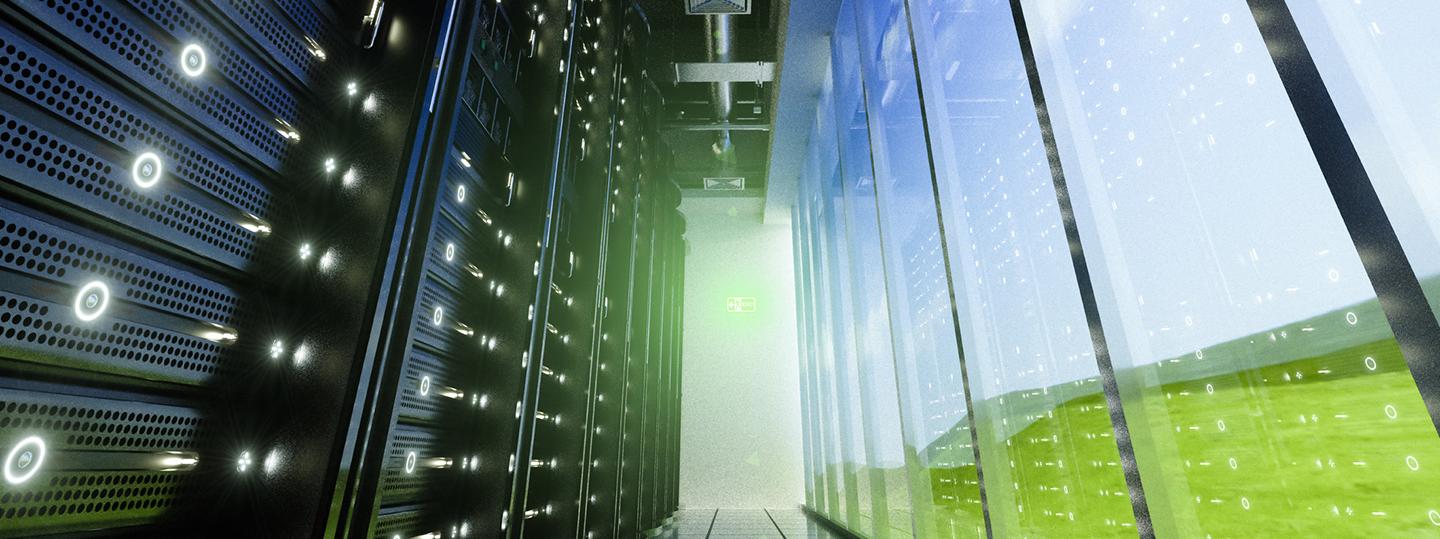
Holism for climate-neutral data centers
Guest contribution by Monika Graß, Grass Consulting
At the latest with the outbreak of the Corona pandemic, it has become clear to us that the future of Europe also depends on further digitalization. For example, since the beginning of the pandemic, companies and employees have been relying heavily on digital forms of work to maintain their business activities even during lockdown periods. Data centers are the nodes of these increasingly important digital lifelines. They now represent at least 1% of global energy demand. In 2018, Google alone consumed 2.26 billion kWh of electricity globally and emitted around 906 kt of CO2.
How the rapidly increasing digitalization will affect the energy and resource requirements in the long term is not yet foreseeable. Currently, there is a rebound effect, which means that although technical products are becoming more efficient, the increase in efficiency simultaneously leads to an increase in the use of the products. The aim must be for digitalization to contribute to substantially reducing both energy consumption and the use of natural resources.
Green data centers for Europe
For further digital growth, Europe needs a reliable data center infrastructure. In line with the European Green Deal, the Climate Neutral Data Center Pact also aims to operate the data centers in Europe in a climate-neutral manner by 2030. This objective is to be achieved essentially by:
- Energy efficiency
By 01/2025, new data centers with a PUE* of 1.3 to 1.4 are expected to work on an annual average with full utilization. By 01/2030, this goal should also be achieved for existing data centers.
- Clean energy
By 12/2025, data centers should operate with 75% renewable energy and by 12/2030 with 100%.
- Water efficiency
Water is used in data centers in particular for cooling IT resources. The water consumption in data centers is to be reduced. By 2022, the data center providers are to define annual targets for water use effectiveness**, which are then to be achieved for new data centers by 2025 and for existing facilities by 2030.
- Circular economy
The reuse, repair and recycling of servers and electronic components is to be prioritized by the data center providers. This also includes the use of such components in new investments.
- Circuit of energy systems
The utilization of waste heat from data centers is to be expanded. Some initial projects are known throughout Europe, for example by utilizing the heat by supplying it to a hotel and building infrastructure, gardening projects (e.g. algae and hemp cultivation) and feeding it into district heating networks. At present, however, the temperatures of the waste heat are usually too low to be used without the use of heat pumps that consume energy.
*Power Usage Effectiveness: A technical measure of the energy efficiency of a data center. The PUE value sets the total energy consumed in a data center in relation to the energy consumption of the IT infrastructure
** Water Usage Effectiveness (WUE): Based on The Green Grid
Climate neutrality without compensation – is that possible?
The question arises as to whether these measures will be sufficient to achieve climate-neutral data centers without compensation through guarantees of origin and certificates. What other contributions can data center operators make?
In my view, we need to address other aspects. Some thoughts:
- Holistic view of control and operation
The smooth interaction of DC infrastructure, IT infrastructure, networks, processes and applications is essential for efficient and highly available data center operation. In practice, the various system levels and trades are usually considered only in isolation – no overall communication takes place.
- Digital twin for sustainable operation
BIM (Building Information Modeling) systems should be used throughout the life cycle of a data center. Especially for the operation I see here essential advantages and approaches for optimization. Early fault detection and predictive maintenance also contribute to sustainability. With the digital twin of the building, but also the systems and the know-how from different installations, the use of resources can be sustainably optimized.
- Automation for optimized processes
Robotics and artificial intelligence can optimize the processes and processes in the data center and also contribute to energy efficiency.
- Smart planning
Planning considerations include location, environment, type of use, size, performance, availability class, and customers. All performance parameters and aspects must be optimally coordinated, questioned and used as a basis for the selection of components. For example, a neighborhood data center could be used jointly by the established companies, thus avoiding redundancies. In addition, the heat could be transferred to the buildings and distances could be reduced. There are also optimization approaches in terms of performance. The design of the performance parameters of the data centers is of fundamental importance. Because each excess kilowatt burdens the cost and CO2 balance. In other words: Why run two TIER III data centers when the company has redundant systems? Would not TIER II be sufficient twice in such a case?
- Promoting and deploying innovation
The data center industry is largely conservative. Innovations are rather rare and are accepted only reluctantly. However, the ambitious climate targets can only be achieved through economical and innovative approaches to waste heat recovery, alternatives to emergency power supply, the use of energy storage, higher temperatures in the data center, and much more. We need think tanks, future labs, and companies that think outside the box to develop, transform, and spread sustainability innovations.
- Promote sustainability goals
The 17 sustainability goals should be present for the entire life cycle of a data center and should be pursued and demanded by all parties involved in procurement, raw products, production, operation and disposal. And partners of such sustainable data center operators are companies that also pursue these goals.
Our Expert










